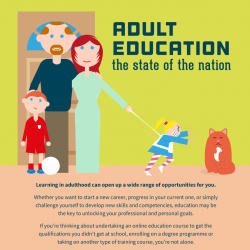Do Your Marketing Materials Talk to Your Customers?
 You open a brochure or go to a Web site and it doesn’t take long before you decide that this isn’t the product or service for you. What comes across isn’t how you benefit from the product, but how wonderful the company is that is selling it.
You open a brochure or go to a Web site and it doesn’t take long before you decide that this isn’t the product or service for you. What comes across isn’t how you benefit from the product, but how wonderful the company is that is selling it.
In a national conference call I presented in January last year, one of the points the moderator & I discussed was how many companies think it’s important to “strut their stuff” and tell their prospects just how wonderful their company is. However, what many companies don’t realize before they start to write a marketing piece is this – it’s vital that you write to your customer, not at them.
As one of my respected colleagues Herschell Gordon Lewis wrote, “When you write a letter that says, ‘Only you…,’ you’ve told the recipient that to you he isn’t a unit, an anonymous number in a computer, a faceless organism…. You also project an attitude of friendliness.”
The reader – your customer or prospect – comes first! Incorporate a friendly, conversational tone as if your prospect were sitting right there, across the table from you. After all, what they want to know first & foremost is “what’s in it for me?” What are the benefits they receive by doing business with you or buying your product?
Yes, your customers want to know that you’re a viable, credible company. However, when they link to that Home page on your Web site or turn to the first panel of your brochure only to read “we do this…” and “we do that…,” chances are that it won’t take long before they click off of your Web site or put that brochure down (i.e. into the circular file).
You must keep in mind that “you” is one of the strongest words in a marketer’s vocabulary. When I review a marketing piece and I repeatedly see “we” and “the client,” or “our customers,” it’s time for a rewrite. For instance, read this paragraph…
We-Centered Content: “John Doe Enterprises offers quality service to all our customers. We provide affordable and effective online marketing solutions. With 30 years of experience, we know how to get the job done.”
The previous “we-centered content” doesn’t mention “you” even once. Therefore, are you likely to keep reading when you’re not addressed personally, but referred to as “the customer” or “client?” Now, read this paragraph…
You-Centered Content: “Attention-to-detail and a plan customized to meet your needs are what you can expect from John Doe Enterprises. Count on marketing solutions that not only meet your budget, they deliver profitable results.”
As you can see, the “you-centered content” never mentions “we,” it focuses on the prospect, not the company selling it. It speaks to the needs of the person who makes the final purchasing decision.
It seems like a day doesn’t go by that we’re not all making some kind of purchasing decision. Whether it’s a purchase for your home, business, family, health, etc., think about what appeals to you when you’re making those decisions to buy. What do you look for when you’re reading about a new product/service you’re considering? Chances are, if the content speaks to you personally – addresses your wants and/or needs – you’ll pay closer attention to it than competitive materials that do not.

